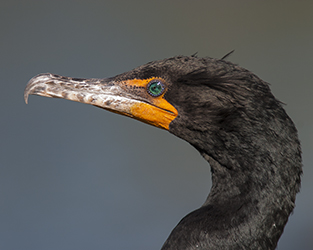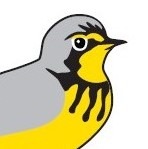
Photo: Ron Ridout
Bird Studies Canada is deeply concerned by the proposal to establish a hunting season for the Double-crested Cormorant in Ontario through amendment to the Fish and Wildlife Conservation Act and supporting regulations. As a science-based conservation organization, with decades of experience monitoring bird populations, we believe that the proposed changes pose significant harm to a native Ontario wildlife species, have the potential to negatively impact other wildlife species and habitats, and also lack scientific rationale or justification. Consequently, Bird Studies Canada voices its strong opposition to the proposal. Please see our statement below for more details.
You can share your own concerns by submitting comments on the proposal (EBR # 013-4124) to the Ministry of Natural Resources and Forestry – please click here. Please note that the comment period ends on 3 January 2019.
STATEMENT:
Bird Studies Canada (BSC) expresses its deep concern regarding the proposal to establish a hunting season for the Double-crested Cormorant in Ontario through amendment to the Fish and Wildlife Conservation Act and supporting regulations. As a science-based conservation organization, with decades of experience monitoring bird populations, we believe that the proposed changes pose significant harm to a native Ontario wildlife species, have the potential to negatively impact other wildlife species and habitats, and also lack scientific rationale or justification. Consequently, BSC voices its strong opposition to the proposal.
Bird Studies Canada is the country’s leading non-governmental organization dedicated to the understanding, appreciation, and conservation of birds. The organization was founded in 1960 as the Long Point Bird Observatory, and by 1998 had expanded programs nationally and adopted the Bird Studies Canada name. A registered charity, BSC’s mission is to conserve wild birds of Canada through sound science, on-the-ground actions, innovative partnerships, public engagement, and science-based advocacy. The organization is science-based with dozens of research, conservation, and outreach programs operating across Ontario and Canada. Many of BSC’s programs are undertaken with the active participation of keen outdoors enthusiasts and field naturalists, currently numbering 49,000 volunteer “Citizen Scientists.” To advance its mission, BSC is proud to collaborate with dozens of conservation partners, representing non-governmental organizations, businesses, private landowners, and also many governmental agencies. This includes the Ontario Ministry of Natural Resources and Forestry (MNRF), which we are pleased to call a partner on many initiatives. We also have a long tradition of working with the hunting community towards waterfowl conservation goals at Long Point and elsewhere within the Ontario Great Lakes Basin.
Bird Studies Canada recognizes the Double-crested Cormorant as a native Ontario species, and one which has been heralded as a conservation success story. BSC also recognizes that the biology of this species and its ecological interactions are complex, making some management decisions challenging. As a colonial-nesting waterbird, the species can have an impact on the flora and fauna in the immediate area of colonies. This impact is sometimes described as large on the small scale, but small on the large scale.
The species suffered from environmental contaminants (notably, persistent organochlorine contaminants) in the Great Lakes region, and its population has recovered rapidly in recent decades from a reduction in these pollutants. Among a number of other factors, the rapid increase may have been aided by nutrient overloading and introduction of non-native prey species in the Great Lakes. While the population has increased significantly in recent decades, MNRF indicates that the population is now stable or declining – a common pattern of growth and stabilization in natural populations – which suggests from the outset this proposal to actively reduce the species’ population by hunting is unwarranted.
BSC’s objections to the proposal are multiple and varied, including: (1) lack of scientific credibility and justification; (2) inconsistencies with standard norms for hunting and Fish and Wildlife Conservation Act principles; (3) unknown impact on Double-crested Cormorant populations, native biodiversity and ecosystems; and, (4) public safety and enforcement of proposed changes. The following is a summary of the major concerns noted by BSC regarding the proposal:
(1) Lack of scientific credibility and justification
- The proposal fails to demonstrate a sound scientific basis for the need for the hunt, lacking any detailed information about the species’ population size.
- The proposal’s policy rationale indicates that the species’ population is stable or declining, decreasing MNRF’s justification for the hunt.
- The proposal fails to address the potential impact of the hunt on the population of Double-crested Cormorants in Ontario, or the potential impact on other wildlife species which could be affected.
- The proposal fails to adopt an ecosystem-based approach to wildlife population assessments and management, a key consideration for a species with such complex interactions with aquatic and terrestrial species and habitats. Among other things, it fails to describe a population management objective (population target) provincially or regionally. Nor does it describe a timeframe over which the proposal would be in place. Although it proposes a program to monitor cormorant population and trends in Ontario, it would be some years before any such program could provide solid estimates, leaving the first few years essentially unmonitored.
(2) Inconsistencies with standard norms for hunting and Fish and Wildlife Conservation Act principles
- The proposed hunt is inconsistent with every tenet of wildlife management and hunting ethic, including failure to protect wildlife during the breeding season and permission to allow game meats to spoil. This proposed divergence from norms highlights the fact that this is not sport hunting by any standard definition, but is rather a broad-scale and largely unregulated cull – reminiscent of unchecked “market hunting,” which modern bird hunting regulations were designed to correct.
- The proposed exemption to the requirement to protect against meat spoilage, coupled with a failure to retrieve or even report carcasses, renders population monitoring and enforcement effectively impossible, which could rapidly lead to large-scale mortality with population level impacts.
- The hunting of Double-crested Cormorants during the breeding season is again inconsistent with wildlife management and hunting principles and ethics; such hunting will inevitably lead to failure of nests and starvation of chicks, which are issues of concern relating to both population management and to inhumane treatment to wildlife.
- The proposed open season from March 15 to December 31 each year represents the entire duration of the species’ natural annual occurrence in Ontario – effectively resulting in no meaningful closed season in the province.
(3) Impact on Double-crested Cormorant populations, native biodiversity and ecosystems
- The proposed bag limit of 50 Double-crested Cormorants per day per hunter with no possession limit over a nine and a half month open season is exceptionally high, unsustainable, and without precedent under the Fish and Wildlife Conservation Act for its failure to address the need for population sustainability. It is not unlikely that such a level of hunting would lead to local and/or regional extirpations, as well as reduction provincially to token remnant populations. The likelihood that this proposal would have only a ‘neutral’ impact is baseless.
- The proposal allows for shooting of Double-crested Cormorants on breeding colonies which could lead to mortality of other colonial waterbird species which often nest in close association, such as Great Blue Herons, Great Egrets, and Black-crowned Night Herons.
- Disturbance by hunters will disrupt other wildlife nesting in and near Double-crested Cormorant colonies, including the above-noted heron family members, as well as other species such as Caspian Terns, Common Terns, and Great Black-backed Gulls.
- The increased level of shooting over water could lead to an increase in toxic shot deposited in lakes and rivers since not all shooters may abide by the proposal’s requirement for non-toxic shot.
(4) Public safety and enforcement of proposed changes
- The proposal allows for unrestricted shooting in Ontario, both in terms of season and location, potentially permitting hunters to be in unsafe proximity to boaters, cottagers and other outdoor recreation enthusiasts. The lack of a closed season in spring and summer increases the public safety risk due to the overlaps of the open season with the peak of outdoor recreation.
- The proposal to permit hunting from a motorboat increases risk for public safety, which is contrary to migratory bird hunting regulations.
- The large scale of the proposed hunt, the permission to discard carcasses and let meat spoil, and the exceptionally long open season render the hunt (including the daily bag limit) unenforceable by conservation officers.
- The proposal’s broad scope and exceptionally high quotas would require intensive and greatly expanded enforcement, as well as greatly increased resources for population monitoring; such resources are not likely to be available at a time when public expenditures are being cut back.
- The Ministry’s intent not to provide additional opportunities for public comment, should the proposal proceed, is a concern for due process relating to Ontario legislation, regulations, and policies.
For the above-noted reasons, Bird Studies Canada expresses its strong opposition to the proposal.

